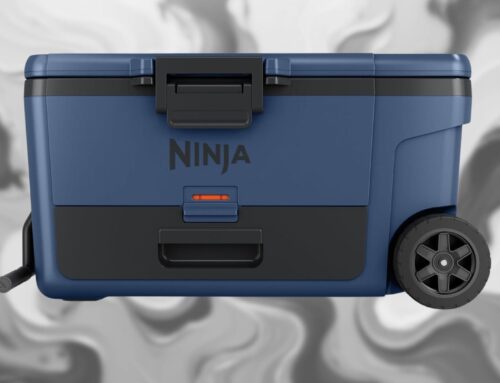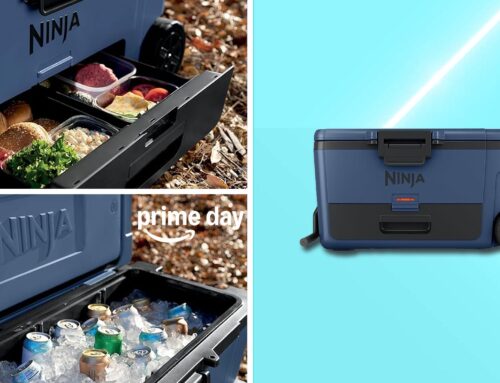Blue Origin’s New Glenn Rocket completes key hot fire test ahead of first launch
December 28, 2024
Blue Origin’s New Glenn Rocket completes key hot fire test ahead of first launch
Blue Origin’s New Glenn rocket successfully completed a critical milestone marking the final major test before its first flight. The company conducted an integrated launch vehicle hot fire test, which lasted 24 seconds and demonstrated the functionality of the entire vehicle as a unified system.The test, held at Launch Complex 36 at Cape Canaveral, featured a seven-engine firing that provided valuable data for Blue Origin’s New Glenn program. With the hot fire test ensures the rocket’s first and second stages, along with a simulated payload should work upon liftoff and reach the destinated orbit.The test marks the culmination of a multi-day testing campaign that included a series of functional checks and tanking tests. These tests were designed to validate the integrated vehicle, which consists of the first and second stages of the NG-1 flight vehicle, as well as a payload test article that includes manufacturing test demonstrator fairings, a high-capacity fixed adapter flight unit, and a 45,000-pound payload mass simulator.The New Glenn rocket’s first mission, NG-1, is set to carry a Blue Ring Pathfinder as its inaugural payload. The test campaign’s primary goal was to ensure that all systems operated smoothly in an on-pad, day-of-launch configuration. The data collected will help refine launch timelines, confirm vehicle performance, and align simulation models with real-world conditions.“This is a monumental milestone and a glimpse of what’s just around the corner for New Glenn’s first launch,” said Jarrett Jones, Senior Vice President of New Glenn. “Today’s success proves that our rigorous approach to testing–combined with our incredible tooling and design engineering–is working as intended.”The test also included a full wet dress rehearsal, which involved simulating the final pre-launch procedures and performing a terminal countdown sequence. The first stage (GS1) was filled with liquefied natural gas (LNG) and liquid oxygen (LOX), while the second stage (GS2) was loaded with liquid hydrogen and LOX. The test demonstrated the rocket’s autogenous pressurization system, which uses gases generated by the rocket itself to pressurize propellant tanks.The New Glenn team achieved several key firsts during the test campaign, including the first operation of all seven engines, the first integrated tanking demonstration, and the first full LNG/LOX propellant load for the first stage. The success of the test brings Blue Origin one step closer to New Glenn’s debut launch.Looking AheadWith several New Glenn vehicles currently in production, Blue Origin has a full customer manifest that includes NASA, Amazon’s Project Kuiper, AST SpaceMobile, multiple telecommunications companies, and several U.S. government agencies. The company is also working to certify New Glenn for the U.S. Space Force’s National Security Space Launch (NSSL) program, ensuring the rocket meets the national security needs of the U.S. government.About New GlennNew Glenn stands at 320 feet (98 meters) tall and features a 7-meter payload fairing, providing double the volume of typical 5-meter commercial launch systems. The rocket’s reusable first stage is designed to perform at least 25 missions and will land on “Jacklyn,” a sea-based platform located hundreds of miles downrange. This reusability is key to reducing the cost per launch.New Glenn’s first stage is powered by seven BE-4 engines, the world’s most powerful liquefied natural gas (LNG)-fueled, oxygen-rich staged combustion engines. Together, these engines generate more than 3.8 million pounds of thrust. The second stage is powered by two BE-3U engines, which use liquid hydrogen and LOX to provide more than 320,000 pounds of vacuum thrust.In addition to the BE-4 and BE-3U engines, Blue Origin manufactures BE-7 engines for its Blue Moon lunar landers, as well as the BE-3PM engine for the company’s New Shepard suborbital rocket.Blue Origin, owned by Amazon founder, Jeff Bezos, started back in September, of 2000 marking a more than 2-decade journey to this moment.
Blue Origin’s New Glenn rocket successfully completed a critical milestone marking the final major test before its first flight. The company conducted an integrated launch vehicle hot fire test, which lasted 24 seconds and demonstrated the functionality of the entire vehicle as a unified system.
The test, held at Launch Complex 36 at Cape Canaveral, featured a seven-engine firing that provided valuable data for Blue Origin’s New Glenn program. With the hot fire test ensures the rocket’s first and second stages, along with a simulated payload should work upon liftoff and reach the destinated orbit.
The test marks the culmination of a multi-day testing campaign that included a series of functional checks and tanking tests. These tests were designed to validate the integrated vehicle, which consists of the first and second stages of the NG-1 flight vehicle, as well as a payload test article that includes manufacturing test demonstrator fairings, a high-capacity fixed adapter flight unit, and a 45,000-pound payload mass simulator.
The New Glenn rocket’s first mission, NG-1, is set to carry a Blue Ring Pathfinder as its inaugural payload. The test campaign’s primary goal was to ensure that all systems operated smoothly in an on-pad, day-of-launch configuration. The data collected will help refine launch timelines, confirm vehicle performance, and align simulation models with real-world conditions.
“This is a monumental milestone and a glimpse of what’s just around the corner for New Glenn’s first launch,” said Jarrett Jones, Senior Vice President of New Glenn. “Today’s success proves that our rigorous approach to testing–combined with our incredible tooling and design engineering–is working as intended.”
The test also included a full wet dress rehearsal, which involved simulating the final pre-launch procedures and performing a terminal countdown sequence. The first stage (GS1) was filled with liquefied natural gas (LNG) and liquid oxygen (LOX), while the second stage (GS2) was loaded with liquid hydrogen and LOX. The test demonstrated the rocket’s autogenous pressurization system, which uses gases generated by the rocket itself to pressurize propellant tanks.
The New Glenn team achieved several key firsts during the test campaign, including the first operation of all seven engines, the first integrated tanking demonstration, and the first full LNG/LOX propellant load for the first stage. The success of the test brings Blue Origin one step closer to New Glenn’s debut launch.
Looking Ahead
With several New Glenn vehicles currently in production, Blue Origin has a full customer manifest that includes NASA, Amazon’s Project Kuiper, AST SpaceMobile, multiple telecommunications companies, and several U.S. government agencies. The company is also working to certify New Glenn for the U.S. Space Force’s National Security Space Launch (NSSL) program, ensuring the rocket meets the national security needs of the U.S. government.
About New Glenn
New Glenn stands at 320 feet (98 meters) tall and features a 7-meter payload fairing, providing double the volume of typical 5-meter commercial launch systems. The rocket’s reusable first stage is designed to perform at least 25 missions and will land on “Jacklyn,” a sea-based platform located hundreds of miles downrange. This reusability is key to reducing the cost per launch.
New Glenn’s first stage is powered by seven BE-4 engines, the world’s most powerful liquefied natural gas (LNG)-fueled, oxygen-rich staged combustion engines. Together, these engines generate more than 3.8 million pounds of thrust. The second stage is powered by two BE-3U engines, which use liquid hydrogen and LOX to provide more than 320,000 pounds of vacuum thrust.
In addition to the BE-4 and BE-3U engines, Blue Origin manufactures BE-7 engines for its Blue Moon lunar landers, as well as the BE-3PM engine for the company’s New Shepard suborbital rocket.
Blue Origin, owned by Amazon founder, Jeff Bezos, started back in September, of 2000 marking a more than 2-decade journey to this moment.
Search
RECENT PRESS RELEASES
Related Post



